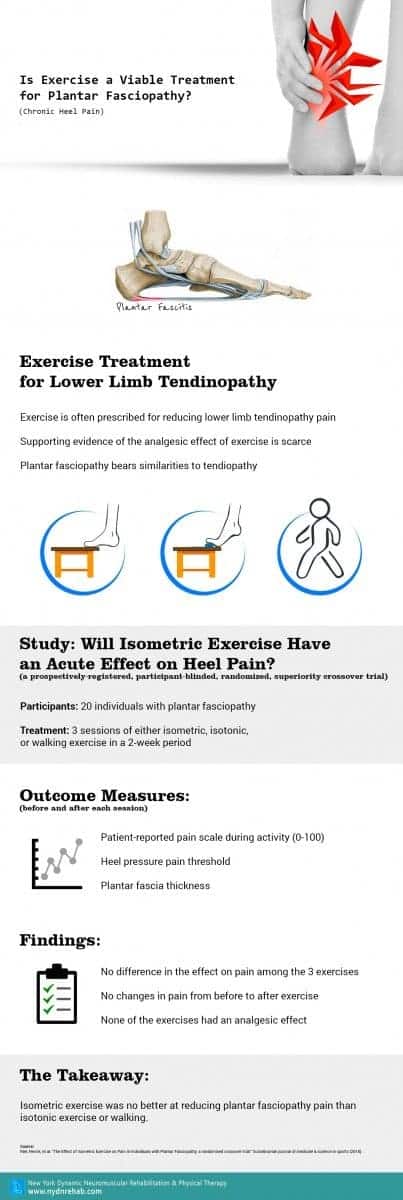Exercise Treatment for Lower Limb Tendinopathy
- Exercise is often prescribed for reducing lower limb tendinopathy pain
- Supporting evidence of the analgesic effect of exercise is scarce
- Plantar fasciopathy bears similarities to tendiopathy
(a prospectively‐registered, participant‐blinded, randomized, superiority crossover trial)
- Participants: 20 individuals with plantar fasciopathy
- Treatment: 3 sessions of either isometric, isotonic, or walking exercise in a 2‐week period
Outcome Measures (before and after each session):
- Patient-reported pain scale during activity (0-100)
- Heel pressure pain threshold
- Plantar fascia thickness
Findings:
- No difference in the effect on pain among the 3 exercises
- No changes in pain from before to after exercise
- None of the exercises had an analgesic effect
The Takeaway:
Isometric exercise was no better at reducing plantar fasciopathy pain than isotonic exercise or walking.
























































